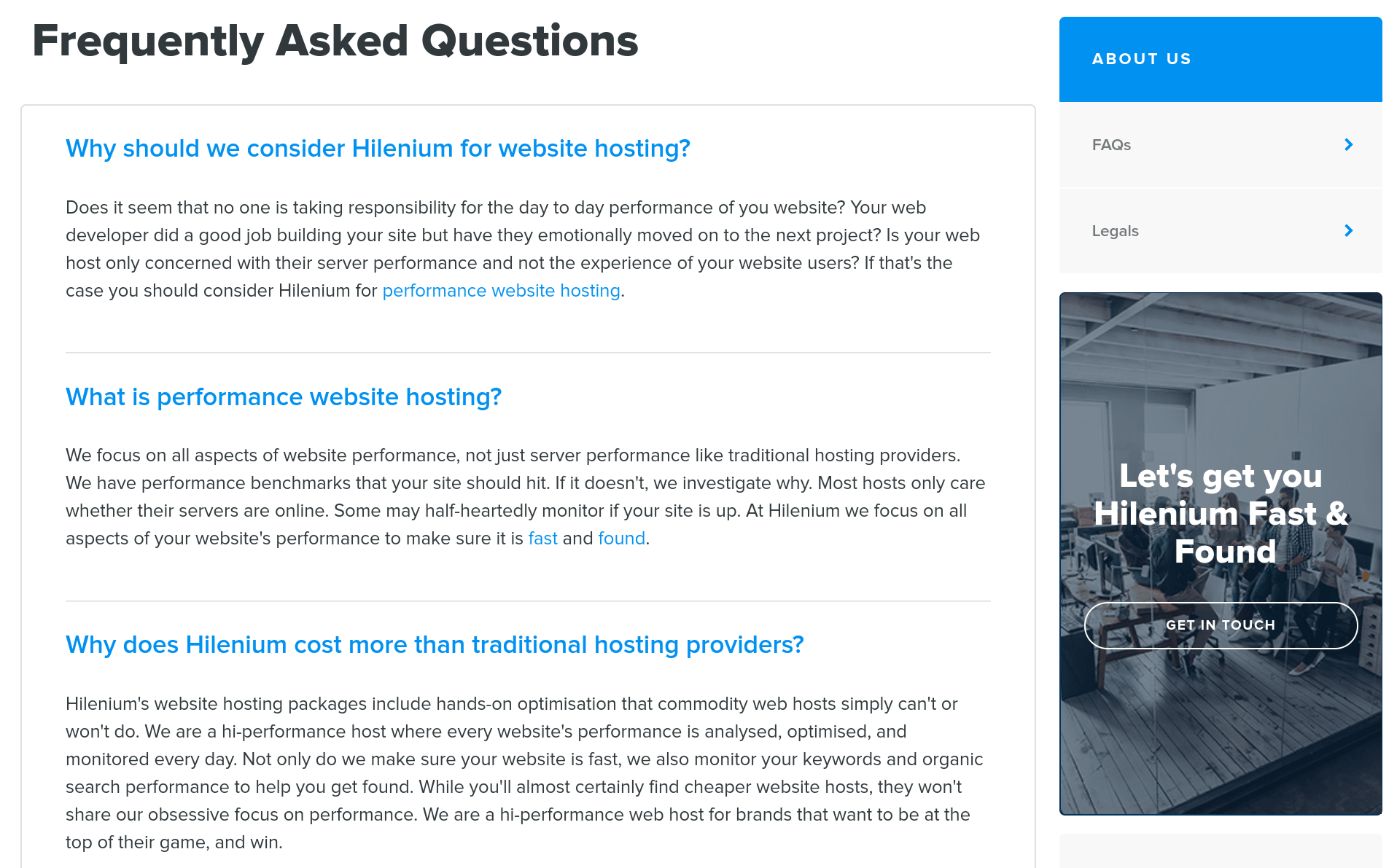
Australian website hosting provider Hilenium was was founded in 2013. Its modern English-language website claims the company was set up by “a bunch of geeks who love tweaking, optimizing and squeezing every last drop of performance.”
Features and Ease of Use
Hilenium offers a set of hosting services that include shared hosting, dedicated server rentals, and website marketing consultancy services. Some of the core features of Hilenium’s hosting plans are:
- 99.9% uptime guarantee
- Daily, weekly and monthly backups
- Domain registration (available)
- Two to twenty add-on domains
- Free SSL certificates (available)
- Unlimited bandwidth
- Up to 200,000 website visitors per month
You get the classic combination of cPanel plus Softaculous (with 432 installable apps). There’s also support for PHP up to version 7.2, MySQL databases, and Cron jobs to schedule repetitive tasks.
If you’re Australian or your customer base is predominantly in Australia, you’ll be pleased to hear that this is where Hilenium locates its servers and customer service staff. The infrastructure is pretty solid, comprising enterprise-grade servers with SSD storage in RAID configuration for speed and reliability.
Hilenium provides an industry-standard 99.9% uptime guarantee, as clearly stated in a detailed service level agreement. The SLA specifies that you will receive credit for any downtime below the agreed level, as long as you submit a support ticket.
Pricing and Support
The Australian dollar prices are quite high, although you do get the Hilenium Fast (performance tuning) and Hilenium Found (search engine optimization) facilities thrown in for free. Unfortunately, the website timed out whenever I tried to pick a plan for purchase, which seems a little strange considering how modern the website looks.
If you need to summon support, as I did, you might be disappointed to hear that my Facebook message went unanswered. Other ways to contact the company, for supposedly 24/7 support, are by ticket, telephone, email, and other social media channels that don’t appear to be particularly active.
For self-support, there’s a blog that hasn’t been updated since March 2018, and a limited set of just four FAQs:

 Website Planet
Website Planet










